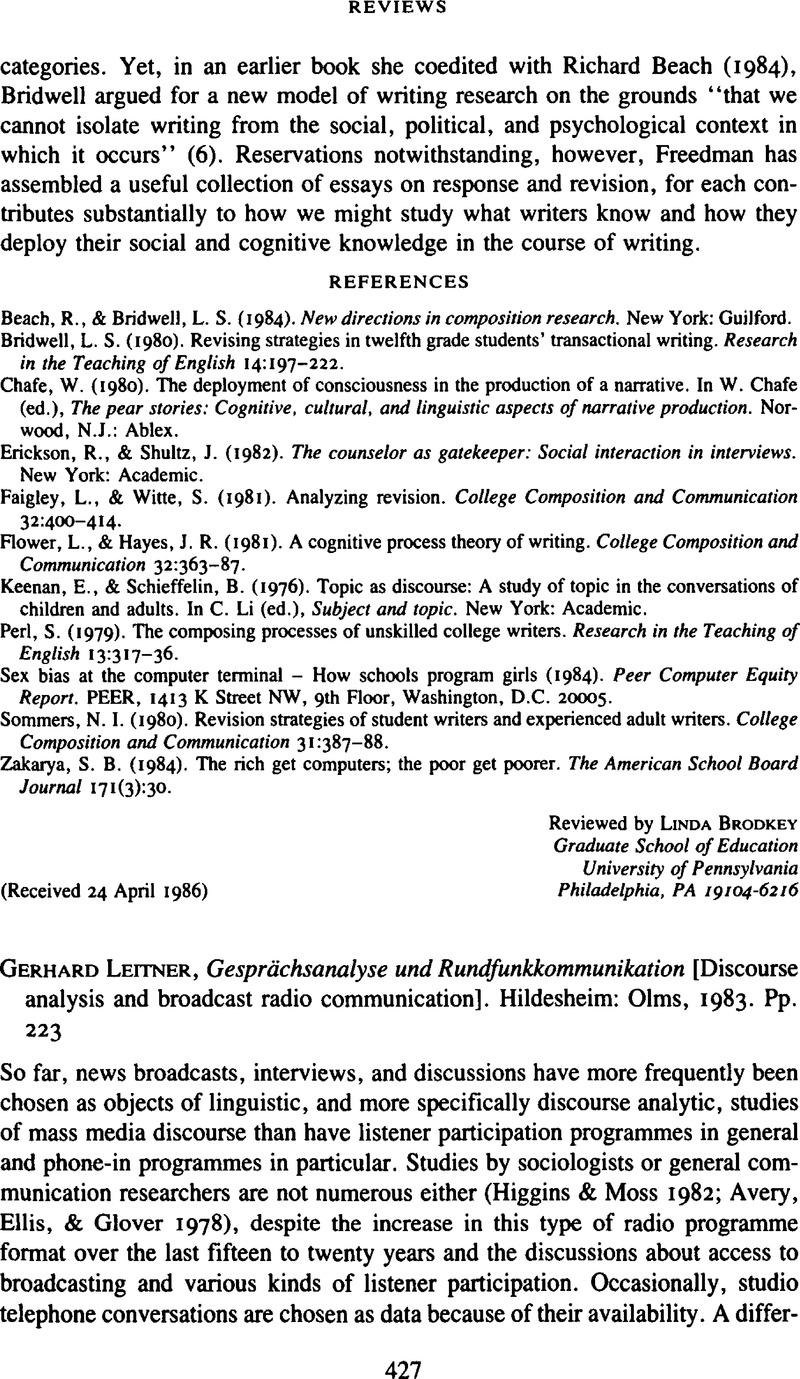Dieckmann, W. (
1985). Wie redet man ‘zum Fenster hinaus’? Zur Realisierung des Adressatenbezugs in öffentlich-dialogischer Kommunikation am Beispiel eines Redebeitrags Brandts. In
Sucharowski, W. (ed.),
Gesprächsforschung im Vergleich. Analysen zur Bonner Runde nach der Hessenwahl 1982.
Tübingen:
Niemeyer.
54–
76.
Google Scholar 